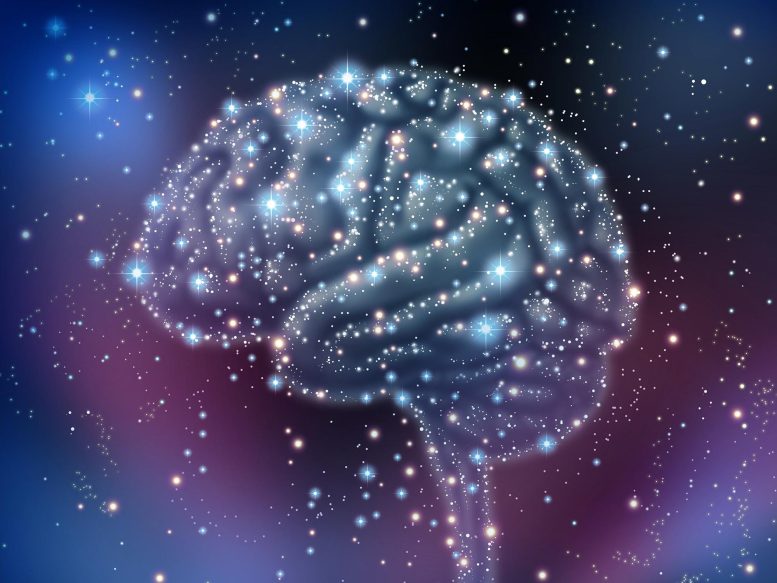
A new study explores how new information is across the sleep-wake cycle.
Researchers discovered a new daily rhythm in a kind of synapse that dampens brain activity using a mouse model. These neural connections, known as inhibitory synapses, are rebalanced as we sleep to allow us to consolidate new information into lasting memories. The results, which were published in the journal PLOS Biology, may help explain how subtle synaptic changes improve memory in humans. Researchers from the National Institute of Neurological Disorders and Stroke (NINDS), which is part of the National Institutes of Health, led the study.
“Inhibition is important for every aspect of brain function. But for over two decades, most sleep studies have focused on understanding excitatory synapses,” said Dr. Wei Lu, senior investigator at NINDS. “This is a timely study to try to understand how sleep and wakefulness regulate the plasticity of inhibitory synapses.”
Kunwei Wu, Ph.D., a postdoctoral fellow in Dr. Lu’s lab, investigated what occurs at inhibitory synapses in mice during sleep and wakefulness. Electrical recordings from neurons in the hippocampus, a brain region involved in memory formation, revealed a previously unknown pattern of activity. During wakefulness, steady “tonic” inhibitory activity increased but fast “phasic” inhibition decreased. They also discovered a far larger activity-dependent enhancement of inhibitory electrical responses in awake mouse neurons, suggesting that wakefulness, rather than sleep, might strengthen these synapses to a greater extent.
Inhibitory neurons use the neurotransmitter gamma-aminobutyric acid (GABA) to reduce nervous system activity. These neurons release GABA molecules into the synaptic cleft, the space between neurons where neurotransmitters diffuse, at inhibitory synapses. The molecules bind to GABAA receptors on the surface of neighboring excitatory neurons, causing them to fire less often.
Further experiments showed that the synaptic changes during wakefulness were driven by an increased number of α5-GABAA receptors. When the receptors were blocked in awake mice, the activity-dependent enhancement of phasic electrical responses diminished. This suggests that the accumulation of GABAA receptors during wakefulness may be key to building stronger, more efficient inhibitory synapses, a fundamental process known as synaptic plasticity.
“When you are learning new information during the day, neurons are bombarded with excitatory signals from the cortex and many other areas of the brain. To transition this information into a memory, you first need to regulate and refine it—that’s where inhibition comes in,” said Dr. Lu.
Prior studies have shown that synaptic changes in the hippocampus may be driven by signals that arise from inhibitory interneurons, a special type of cell that comprises only about 10-20% of neurons in the brain. There are over 20 different subtypes of interneurons in the hippocampus, but recent studies have highlighted two types, known as parvalbumin and somatostatin, that are critically involved in synapse regulation.
To identify which interneuron was responsible for the plasticity they observed, Dr. Lu’s team used optogenetics, a technique that uses light to turn cells on or off, and found that wakefulness led to more α5-GABAA receptors and stronger connections from parvalbumin, but not somatostatin, interneurons.
Humans and mice share similar neural circuits underlying memory storage and other essential cognitive processes. This mechanism may be a way for inhibitory inputs to precisely control the ebb and flow of information between neurons and throughout entire brain networks.
“Inhibition is actually quite powerful because it allows the brain to perform in a fine-tuned manner, which essentially underlies all cognition,” said Dr. Lu.
Because inhibition is essential for nearly every aspect of brain function, this study could contribute to helping scientists understand not just sleep-wake cycles, but neurological disorders rooted in abnormal brain rhythms, such as epilepsy.
In the future, Dr. Lu’s group plans to explore the molecular basis of GABAA receptor trafficking to inhibitory synapses.
Reference: “Sleep and wake cycles dynamically modulate hippocampal inhibitory synaptic plasticity” by Kunwei Wu, Wenyan Han and Wei Lu, 1 November 2022, PLOS Biology.
DOI: 10.1371/journal.pbio.3001812
The study was partly funded by the Intramural Research Program at the NINDS.